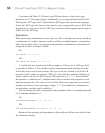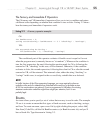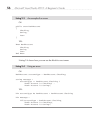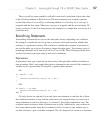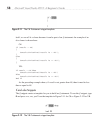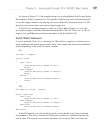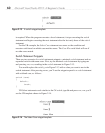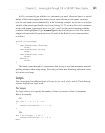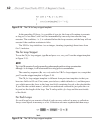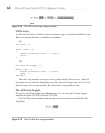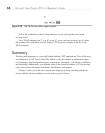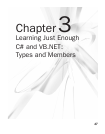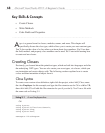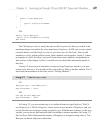
62 Microsoft Visual Studio 2010: A Beginner’s Guide
In the preceding C# loop, i is a variable of type int, the loop will continue to execute
as long as i is less than 3, and i will be incremented by one every time after the loop
executes. The condition, i < 3, is evaluated before the loop executes, and the loop will not
execute if the condition evaluates to false.
The VB For loop initializes i as an integer, iterating (repeating) three times from
0 to 2, inclusive.
The for Loop Snippet
To use the C# for loop snippet, type fo and press TAB, TAB; you’ll see the snippet template
in Figure 2-15.
NOTE
The + and & operators from the preceding code example perform string concatenation.
Although i is an integer, it will be converted to a string prior to concatenation.
The same key sequence (fo, TAB, TAB) works for VB For loop snippets too, except that
you’ll see the snippet template in Figure 2-16.
The C# for loop snippet template is different from previous templates in that you
have two fields to fill out. First, name your indexer, which defaults to i, and then press
TAB, which moves the focus to the loop size field, containing Length as the placeholder.
If you like the variable name i, which is an understood convention, just press the
TAB
key and set the length of the loop. You’ll end up with a for loop and the carat inside
of the block.
For Each Loops
For each loops let you execute a block of code on every value of an array or collection.
Arrays store objects in memory as a list. Collections are more sophisticated than arrays
Figure 2-15 The C# for loop snippet template
Figure 2-16 The VB For loop snippet template



